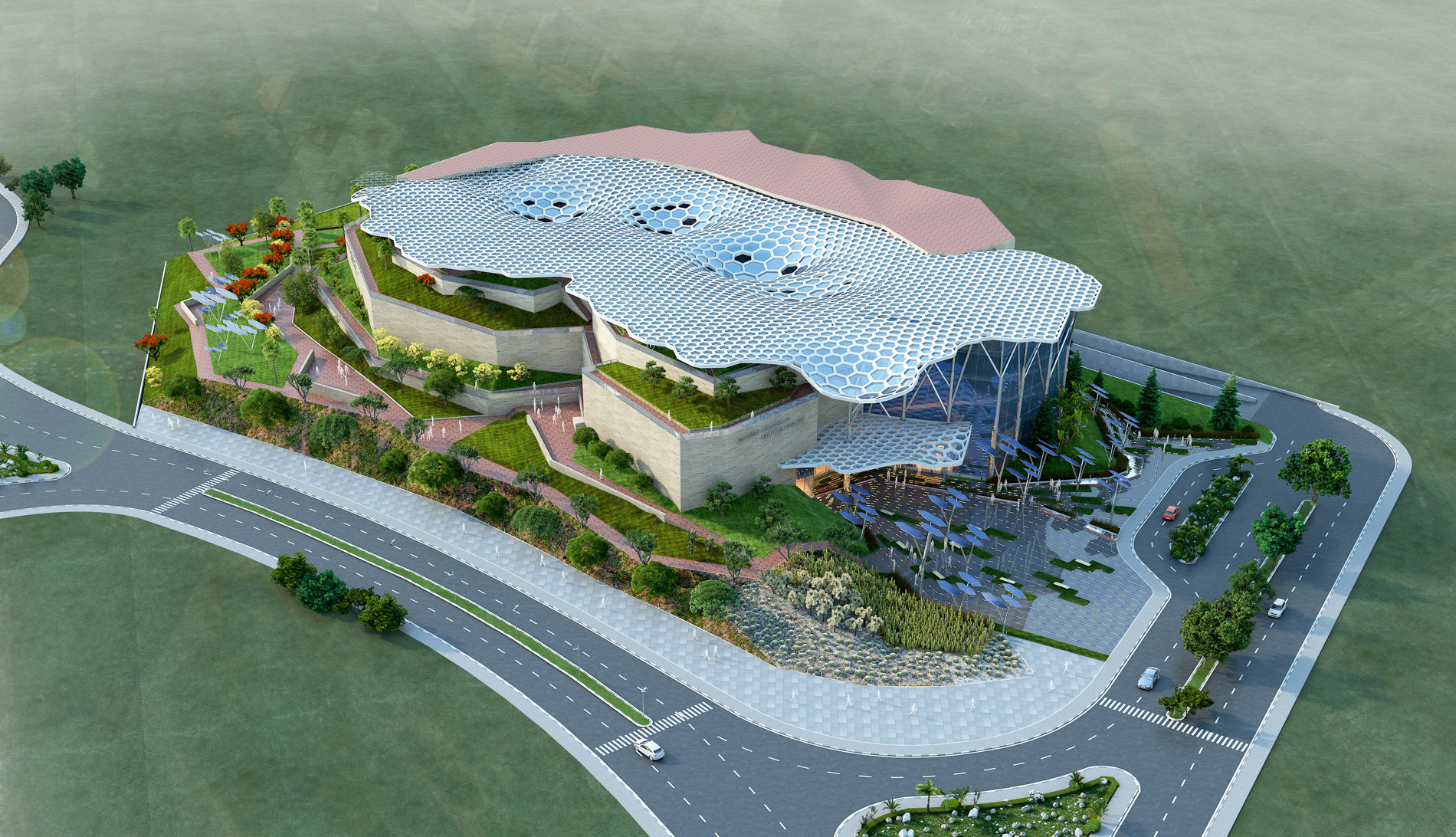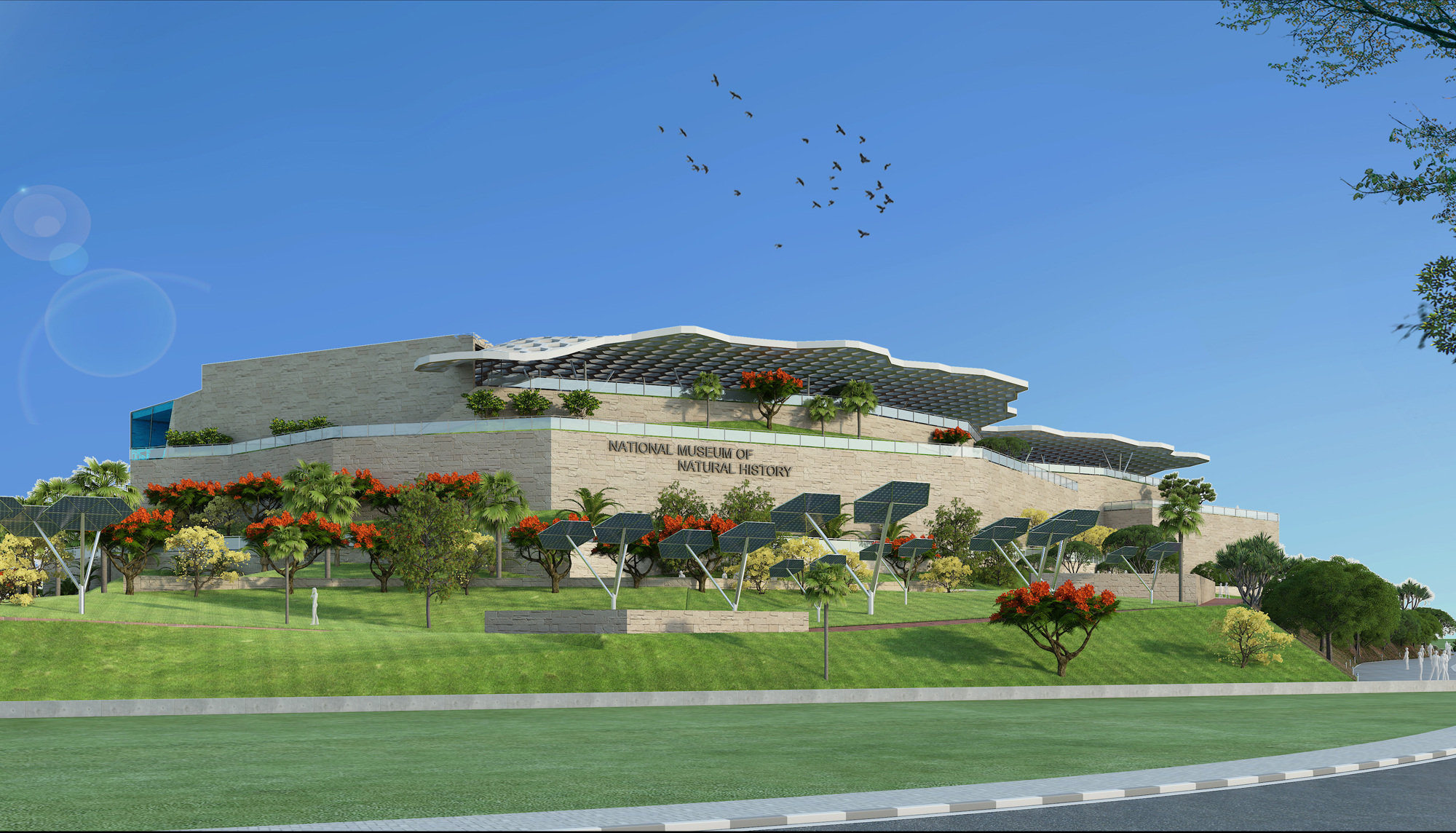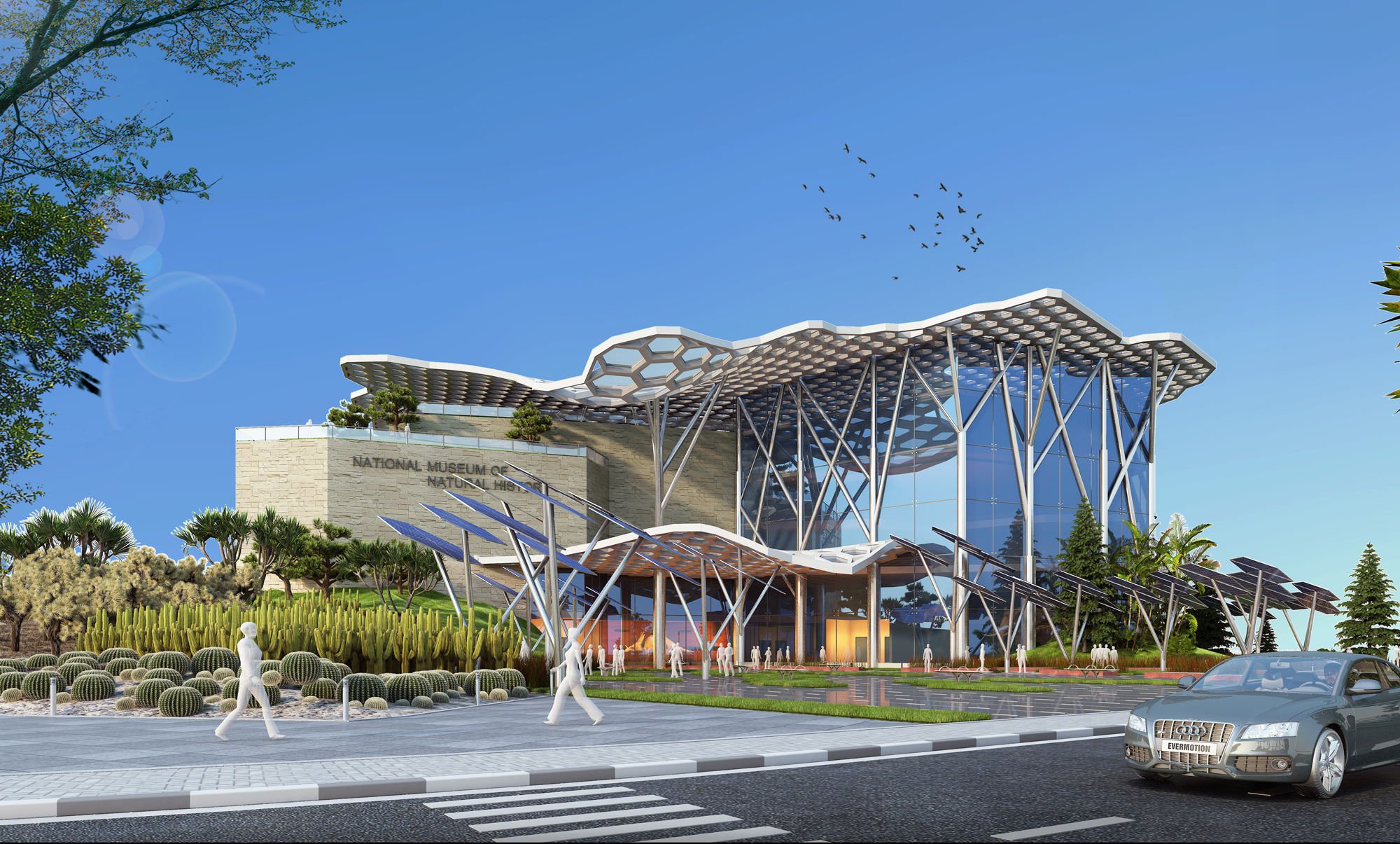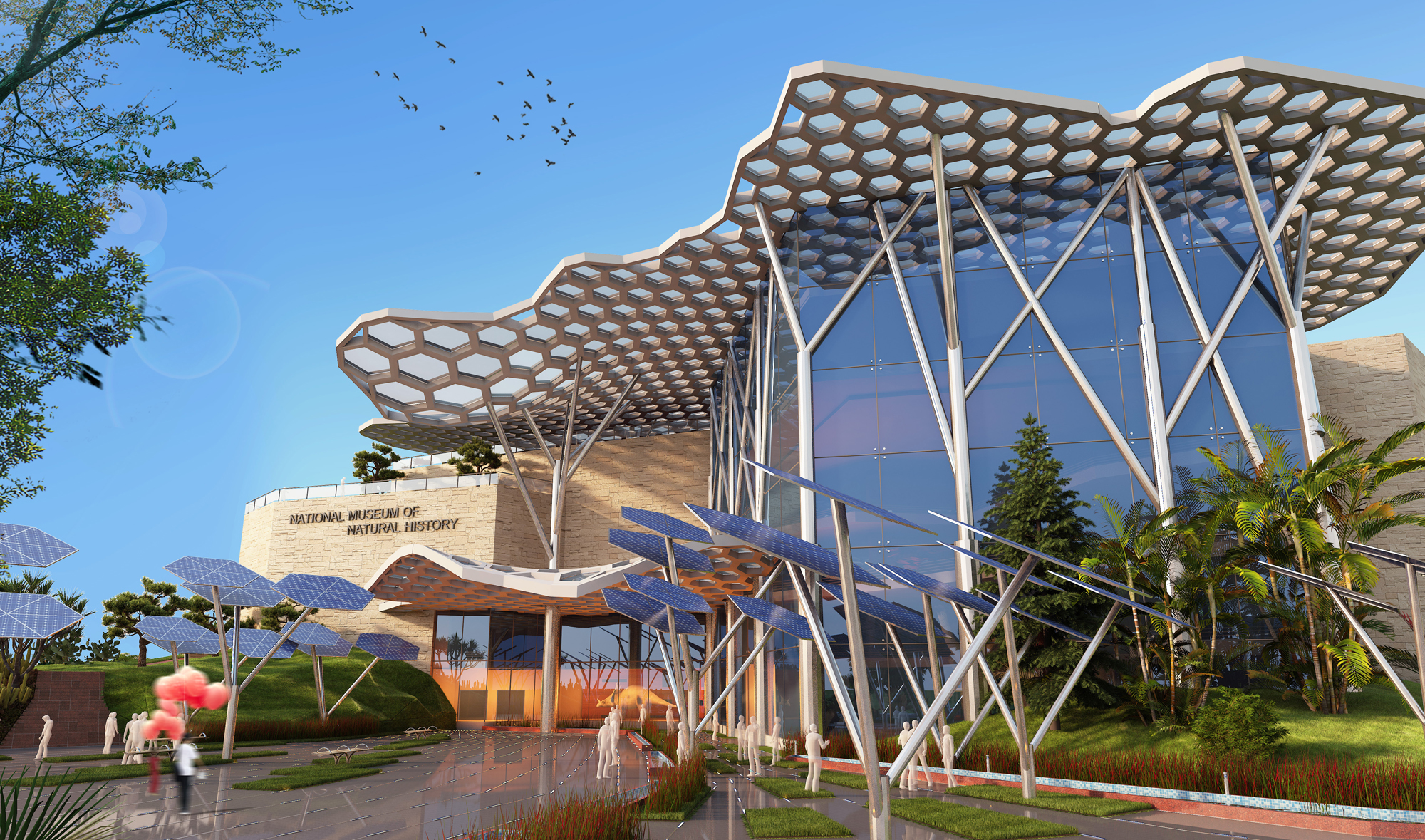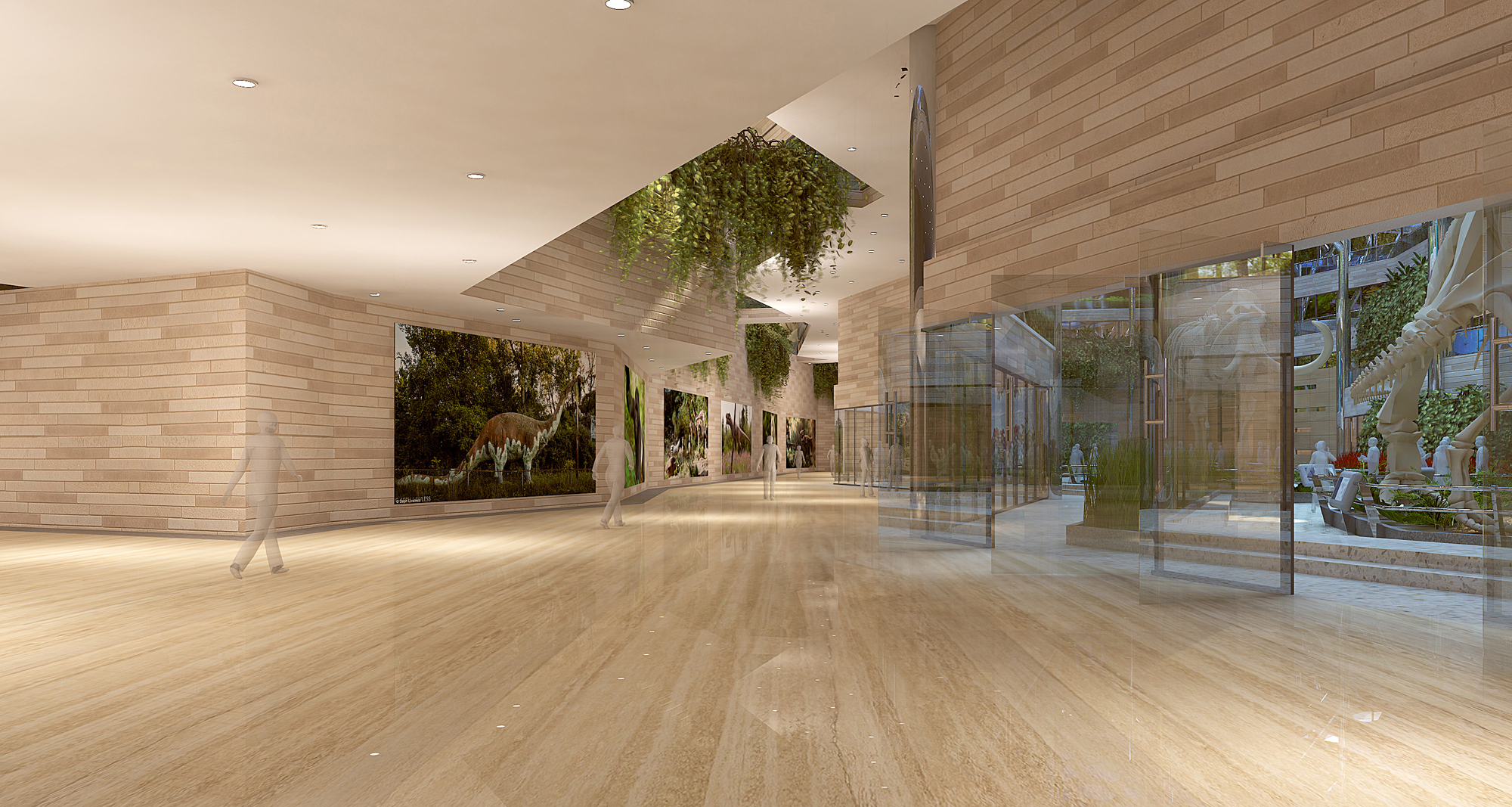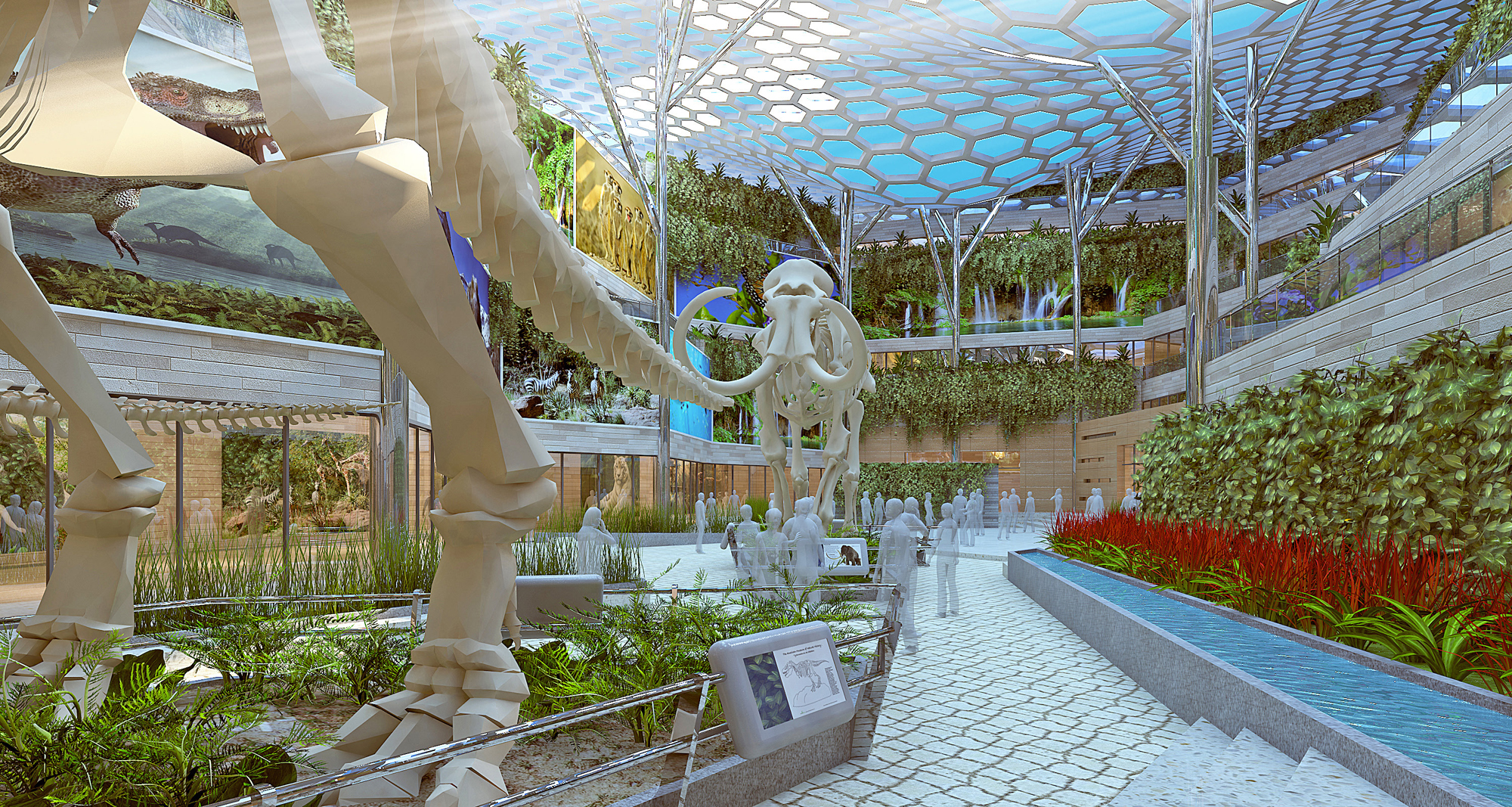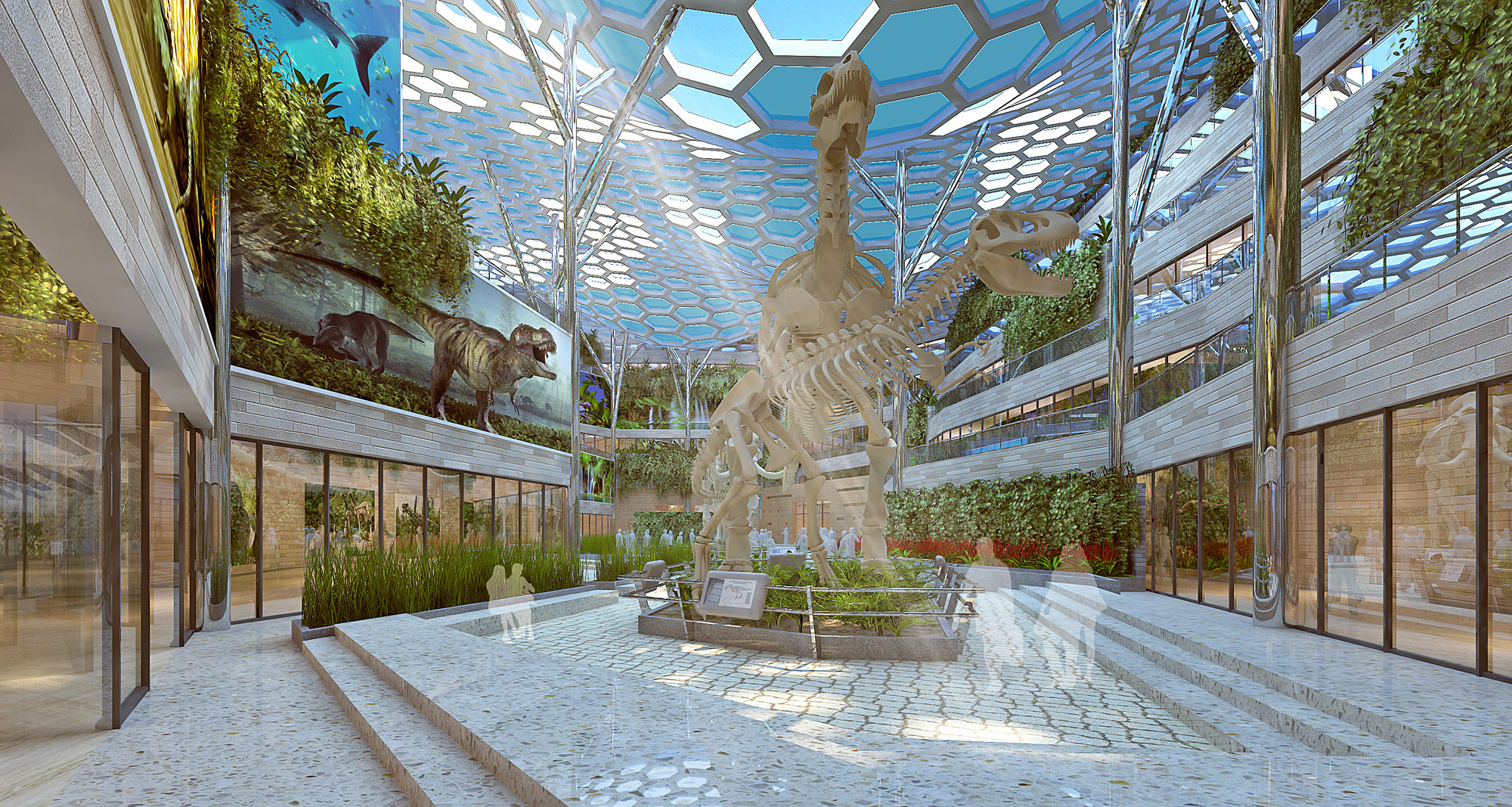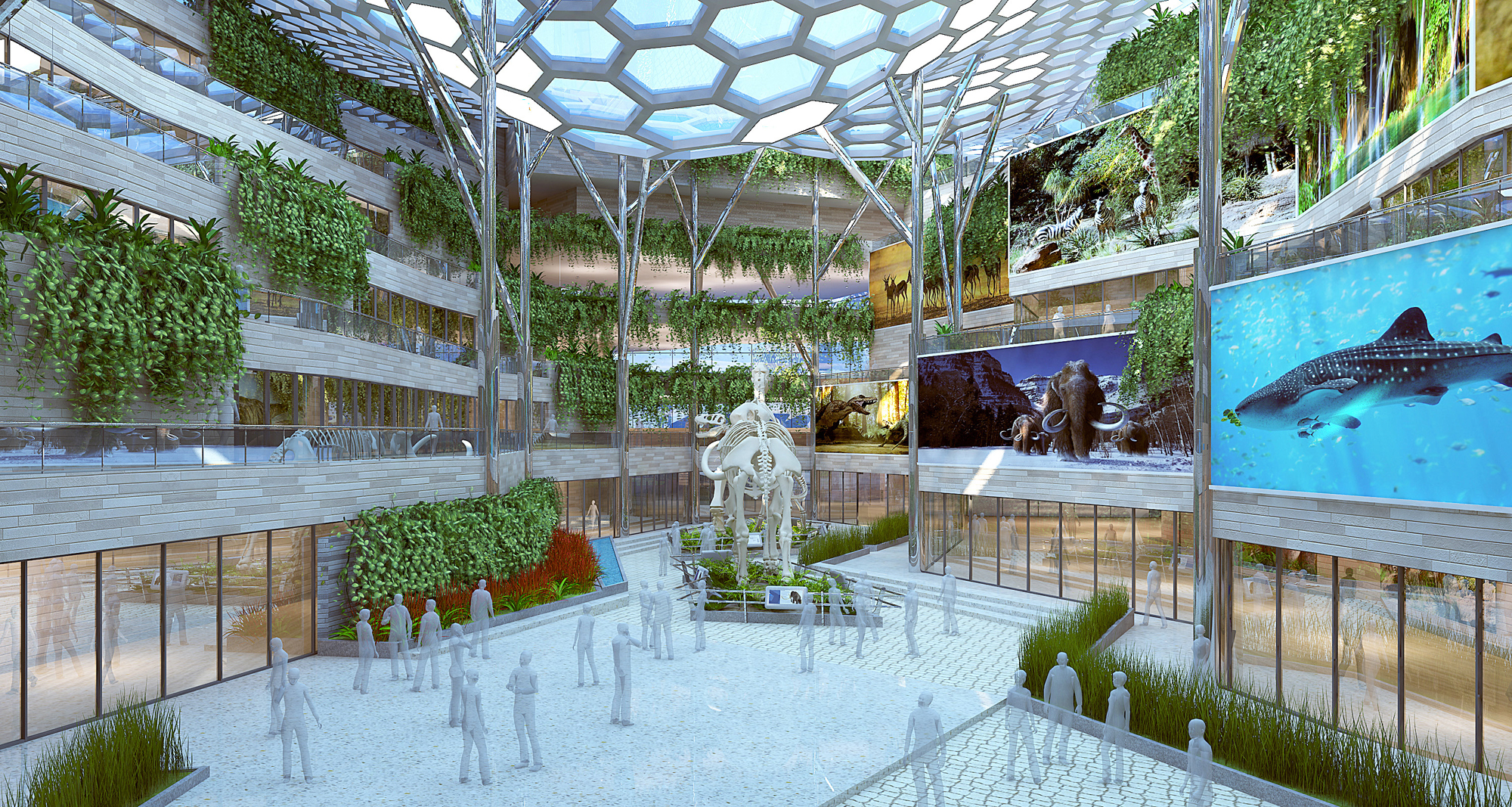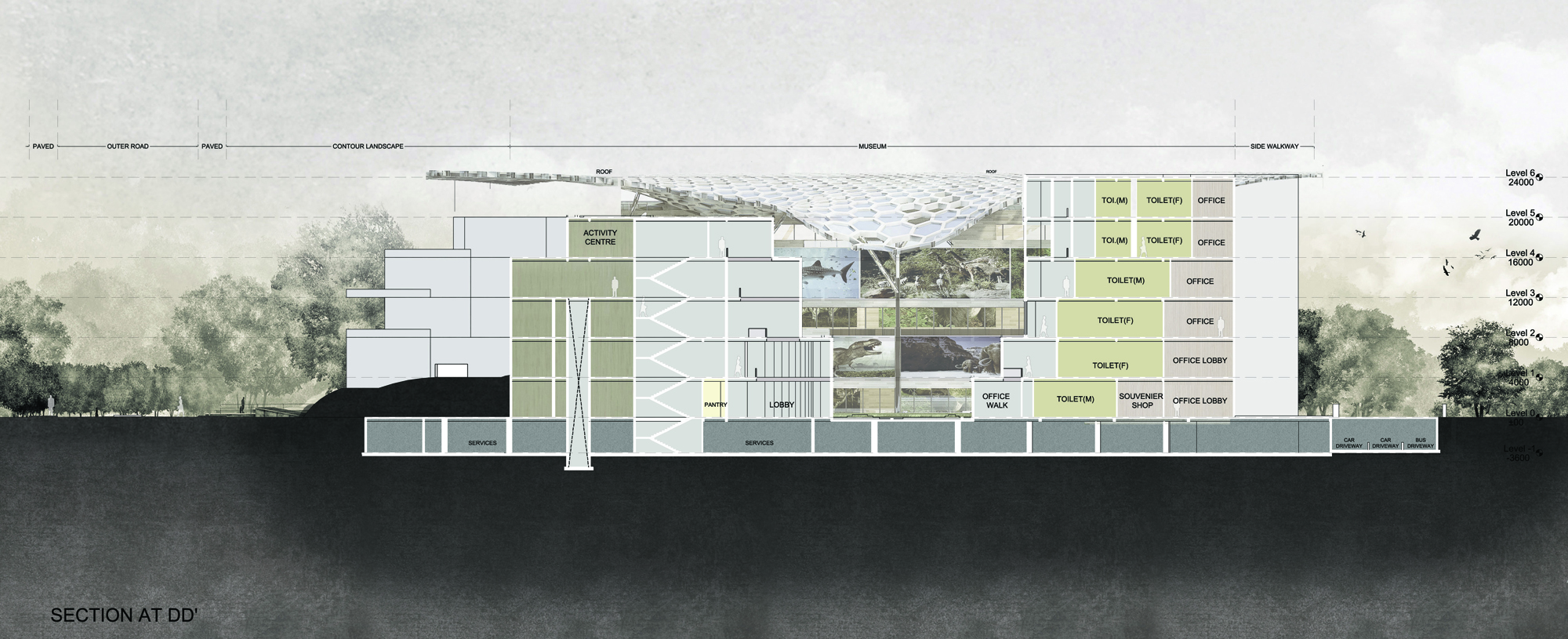National Museum of Natural History
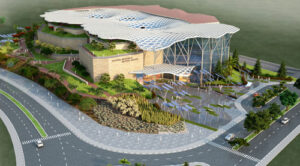
Location: New Delhi, India
Role: Museum Architect for International Competition; collaborated with Delhi architecture firm AED.
Program: Natural History exhibit areas, convention center, collection storage, auditorium, library, lobby, cafe, gift shop, function spaces, classrooms, exhibit support, underground parking, and offices. Retail spaces incorporated for rental income.
Building Area: 340,000 sf (plus 120,000 sf underground parking area)
Status: Our team was awarded the project in 2016, awaiting government approval to proceed.
Description:
Delhi’s National Museum of Natural History has been planned with a vision to create a design that meets LEED Platinum, Five Star GRIHA, and Net Zero with respect to electrical power energy, and necessitates a concept that is informed by these prerequisites.
Our overall design approach is to create a single building focused around a central open-air public space. By embedding the open space within the heart of the building, the courtyard becomes unexpected – a place of discovery and wonder.
Circulation paths are situated in a ring around the courtyard. Program areas are located directly off circulation paths. Visitors will circulate around the open-air space to enjoy the Permanent and Temporary Exhibits, see performances in the Theatre, attend a Convention, Seminar, or Class, dine in the Canteen, or play in the Activity Center.
Terraces are provided on all floors with circulation paths to make the courtyard accessible from all levels at multiple locations, providing natural light and ventilation to the interior circulation spaces wrapping around it at each level. Walls into the courtyard are mainly glass, maximizing views and an open feel. The form of the stepped terraces is inspired by the process of an archeological excavation, with terraces stepping out as the building ascends.
Exterior green terraces help create an imagery evoking the ruined ramparts of the adjacent fortress Purana Qila. Most of the building is embedded in these mounds to take advantage of ground cooling and to minimize the exterior envelope.

